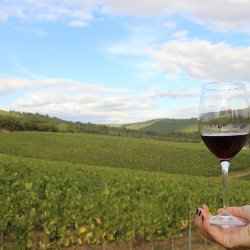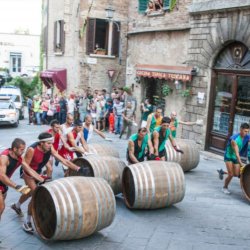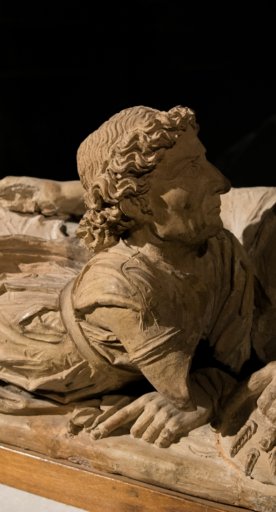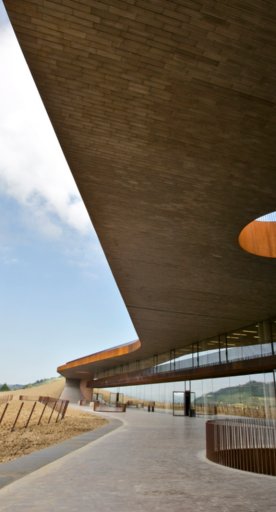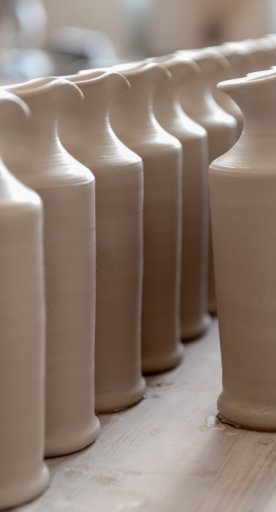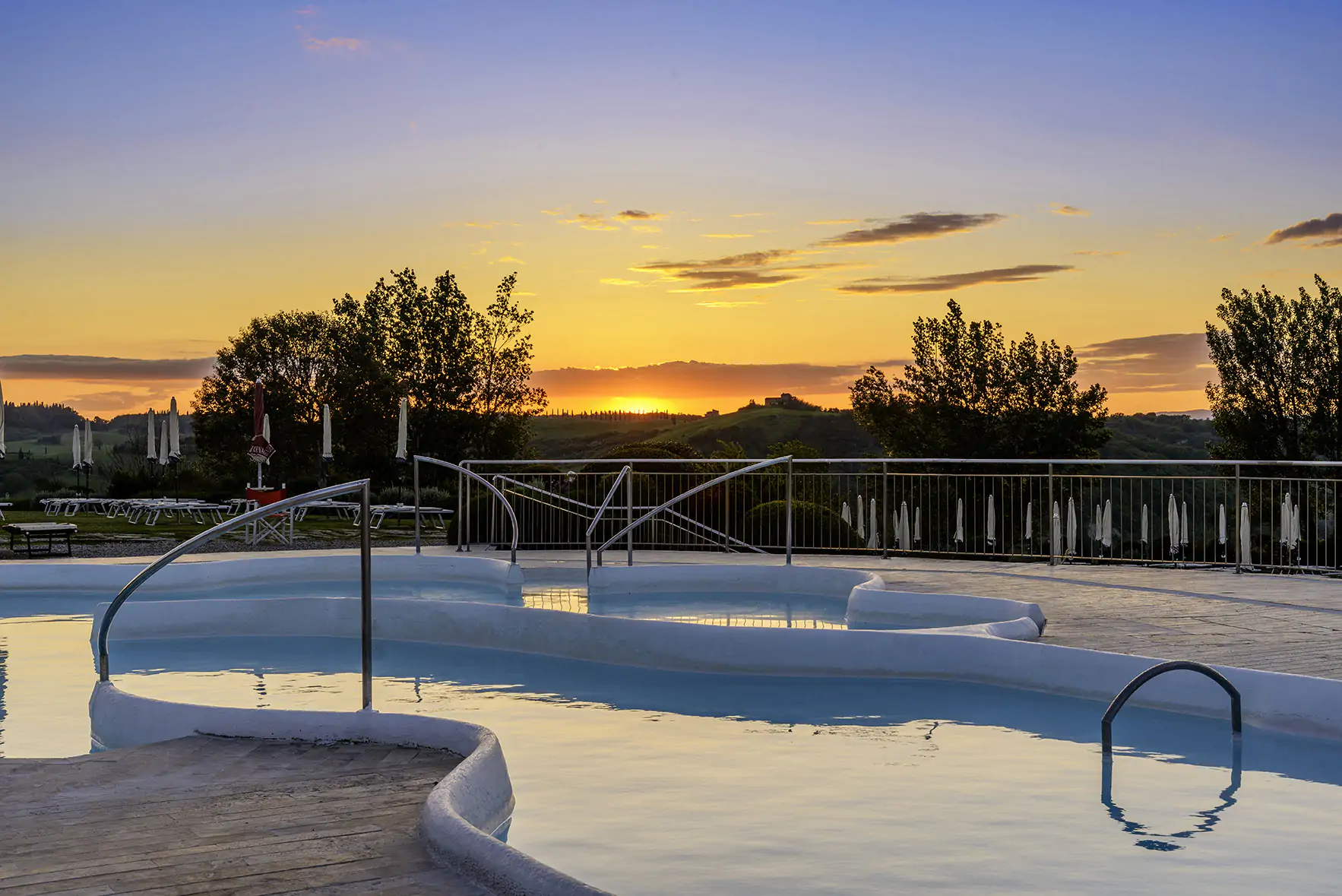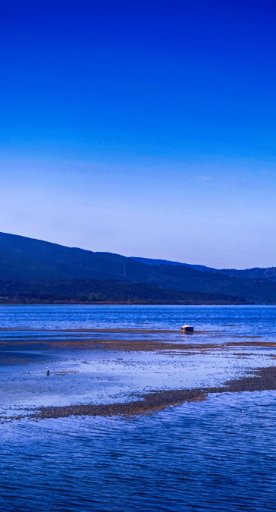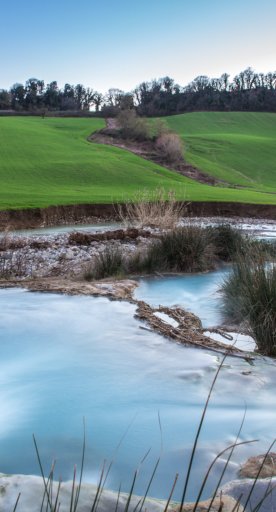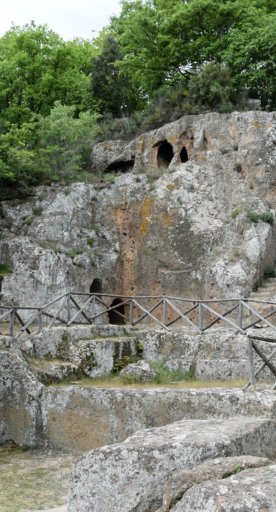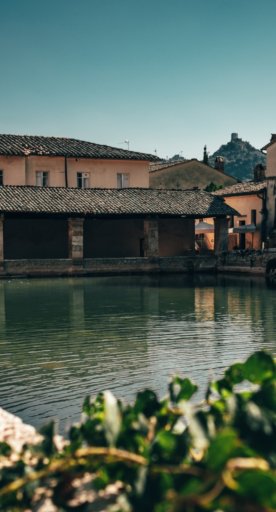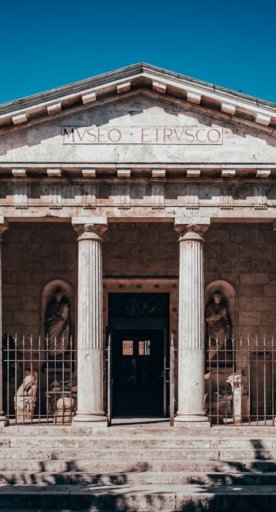10 things to see in Montepulciano
An itinerary for discovering this delightful town
In the heart of the Valdichiana Senese area, Montepulciano epitomizes the Tuscany of your dreams: a picturesque medieval village perched on a hilltop, ideal for those seeking relaxation and for lovers of good wine.
Also famous for its renowned Nobile di Montepulciano wine, this little gem is perfect for a stay filled with culture, nature and authentic flavors.
From historic monuments to wine cellars, scenic walks and the enchanting Piazza Grande, Montepulciano offers an infinite number of experiences not to be missed. Together, let's discover 10 things to do, to appreciate its all of its charm!
-
1.Piazza Grande and Civic Museum
-
2.Palazzo Comunale
-
3.Churches in the historic center
-
4.Church of San Biagio
-
5.Medici Fortress
-
6.Passeggiata poliziana
-
7.Montepulciano Lake Nature Reserve
-
8.Wine cellars
-
9.Events
-
10.Typical products
Piazza Grande and Civic Museum

Piazza Grande is the heart of Montepulciano, the village's meeting point filled with history, architecture and cultural life.
In the center of the square you will find Pozzo dei Grifi e dei Leoni, a well designed by Antonio da Sangallo during his stay in Montepulciano, which has become one of the symbols of the village.
A curiosity: this very square is where the main scene of New Moon - the second film in the Twilight saga - was filmed, in which Bella saves Edward's life.
Not far away, inside the 14th-century Palazzo Neri Orselli, the Civic Museum contains a rich collection of paintings, terracottas and archeological finds.
Palazzo Comunale
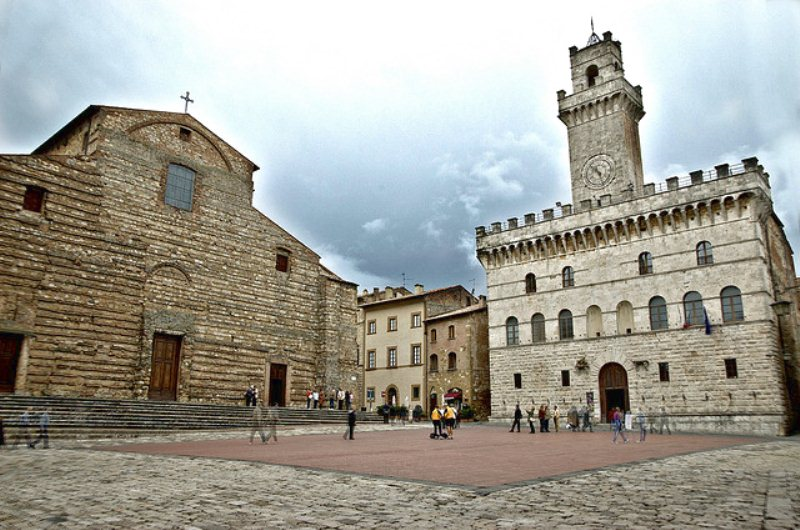
Palazzo Comunale in Montepulciano is a short walk from the charming Piazza Grande and is one of the town's symbolic buildings: its travertine Gothic façade, characterized by elegant lines and a crenellated tower, reflects the town's historical prestige.
From the top of the tower, which you can reach via an internal staircase, there is an incredible panoramic view of the surrounding hills, which embrace the Valdichiana and Val d'Orcia areas.
Churches in the historic center

The Cathedral of Montepulciano, dedicated to Santa Maria Assunta, dominates the top of the town: it was built between 1586 and 1680, based on a design by Ippolito Scalza, and it replaced the ancient Parish Church of Santa Maria, of which the massive 15th-century bell tower still remains, the upper part of which was never completed, .
The façade also remained unfinished.
Inside it, there are valuable works like the Triptych of the Assumption by Taddeo di Bartolo, the Funeral Monument of Bartolomeo Aragazzi created by Michelozzo and a splendid glazed terracotta sculpture by Andrea della Robbia.
A short walk from the cathedral, stands the Church of Sant’Agostino, a Gothic-Renaissance building that took more than two centuries to complete: the works officially began in 1285, the year in which Guglielmo dei Conti Ubertini, the Bishop of Arezzo at that time, blessed the laying of the foundation stone, while the date of its completion is around 1440.
Inside the church, there are Renaissance frescoes and a multicolored wooden crucifix dating back to the 1400s, which sources attribute to Donatello or Antonio da Sangallo.
Church of San Biagio
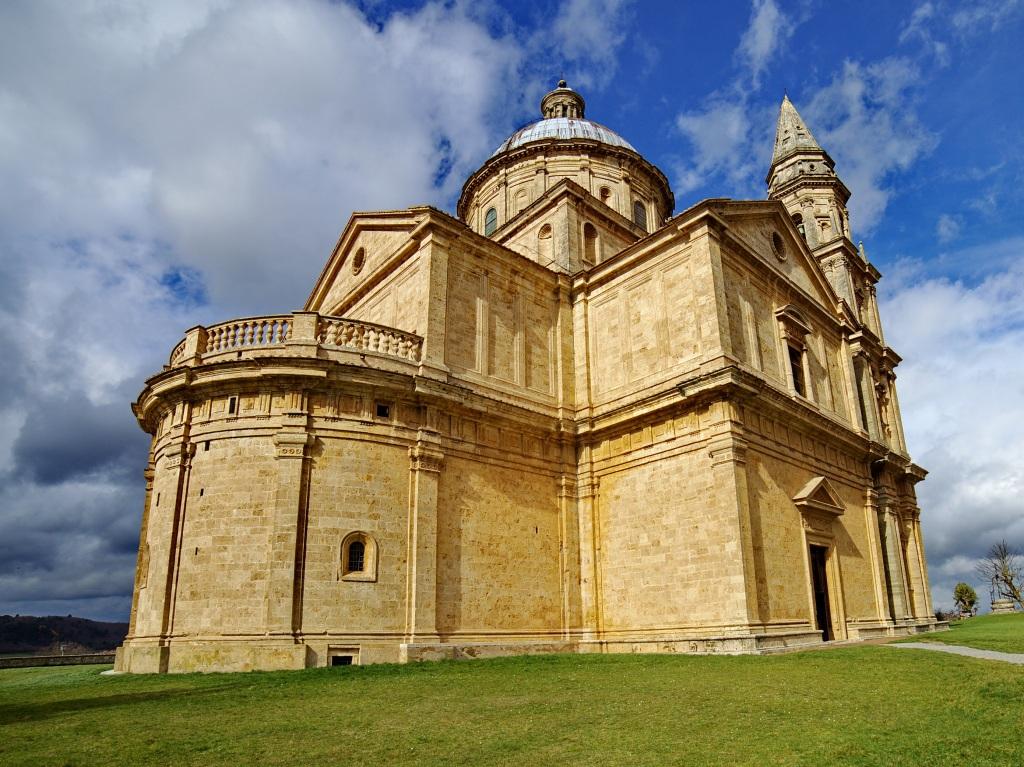
The Temple of San Biagio, designed by Antonio da Sangallo the Elder, is a masterpiece of Renaissance architecture located just outside Montepulciano.
Built just outside the town between 1518 and 1548 and consecrated in 1537, the temple features a magnificent central dome and a semicircular apse. On the opposite side stand two bell towers. Only the one on the left was completed.
This extraordinary building was erected on the site of an early Christian church and, inside it, there is still a fresco of the Madonna Enthroned with Child, known as the Madonna of San Biagio, which dates back to the 14th century in Siena and to which miraculous powers were attributed in 1518. Michelangelo drew inspiration from this church when drawing what would later be his designs for the construction of St. Peter's Basilica in Rome.
Medici Fortress
The Medici Fortress, built in 1261 as a military building by the Republic of Siena, has undergone numerous renovations over the centuries, due to the conflicts between the people of Siena and those of Florence.
It is located in the historic center, near Piazza Grande, and the last reconstruction was by Antonio da Sangallo the Elder, which is why it is has the Medici name.
In 1885, Siena-born engineer Augusto Corbi embarked upon a significant renovation.
Today, the spaces inside the Fortress are used as exhibition areas.
Passeggiata poliziana
The Passeggiata Poliziana stretches for about 200 meters beneath the ancient walls of Montepulciano, connecting Porta delle Farine to Piazza Santa Maria dei Servi.
Named after Agnolo Ambrogini, known as Poliziano, this walkway pays tribute to an important humanist who was born right here.
The route also offers easy access to the historic center of Montepulciano and treats you to a panoramic view of the Valdichiana Senese and Aretina areas, with glimpses of Cortona, the lakes of Chiusi and Trasimeno and the Apennine mountain chain.
Montepulciano Lake Nature Reserve

A few kilometers from the town, in the southern part of Valdichiana and close to the Umbrian border, the Montepulciano Lake Nature Reserve includes not only the lake, but also the Canale Maestro della Chiana and surrounding farmland.
Along with Lake Chiusi, it represents what remains of the vast marshland that dominated the area until the Medici era, making it one of the most significant wetlands in central Italy.
The Reserve is located along one of the main migratory routes through Tuscany and is a fundamental stopping place for birds traveling from Africa to Europe.
Wine cellars

Vino Nobile wine comes from these hills, from vineyards set in an extraordinary landscape, and its history is based on a centuries-old winemaking tradition.
As early as the 17th century, Francesco Redi defined it the king of Tuscan wines. It was appreciated by aristocrats and lords and it has maintained its fame over time, while in recent decades the quality of Vino Nobile wine has increased considerably, thanks to the renewal of the vineyards and the adoption of state-of-the-art techniques: today it is considered one of the most prestigious Italian red wines.
The historic Vino Nobile wine cellars can be found in the basements of Renaissance buildings in the historic center and are located along tunnels dug into the tuff and spectacular brick vaults.
Events
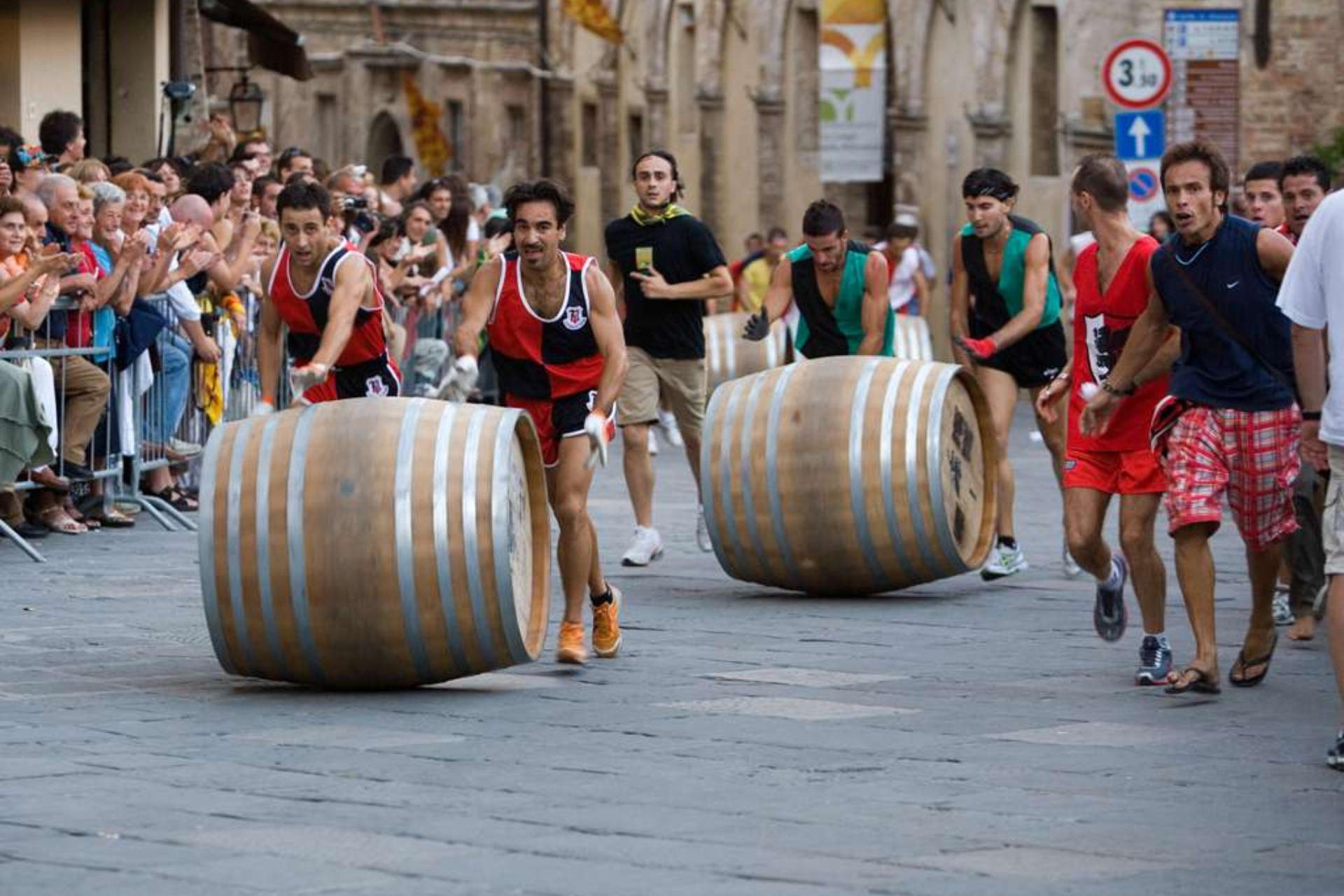
On the last Sunday in August, Montepulciano hosts the Bravìo delle Botti event, a historic competition between the eight Contrade (districts) that compete in rolling 80-kilogram barrels uphill along a course of 1,800 meters.
The predefined route runs through the picturesque streets of the historic center until it reaches the Cathedral forecourt.
The Historical Parade, with more than 300 participants, comes to life in the afternoon. At 7 pm, the Big Bell rings, signaling the start of the race.
Only one Contrada can celebrate victory and win the “Panno” (Cloth), in a tradition that has been handed down for more than 600 years.
We cannot talk about Montepulciano without mentioning the famous Bruscello Poliziano, a theatrical event dating back to 1939 and held during the days of the 15 August Ferragosto holiday. On this occasion, Piazza Grande is transformed into a large auditorium and the Cathedral forecourt becomes the stage.
The words and the creativity of the performance are completely entrusted to the company of "bruscellanti," who choose the plot around which the show will revolve, based on the recurring holidays and the themes most heartfelt in the town.
Typical products
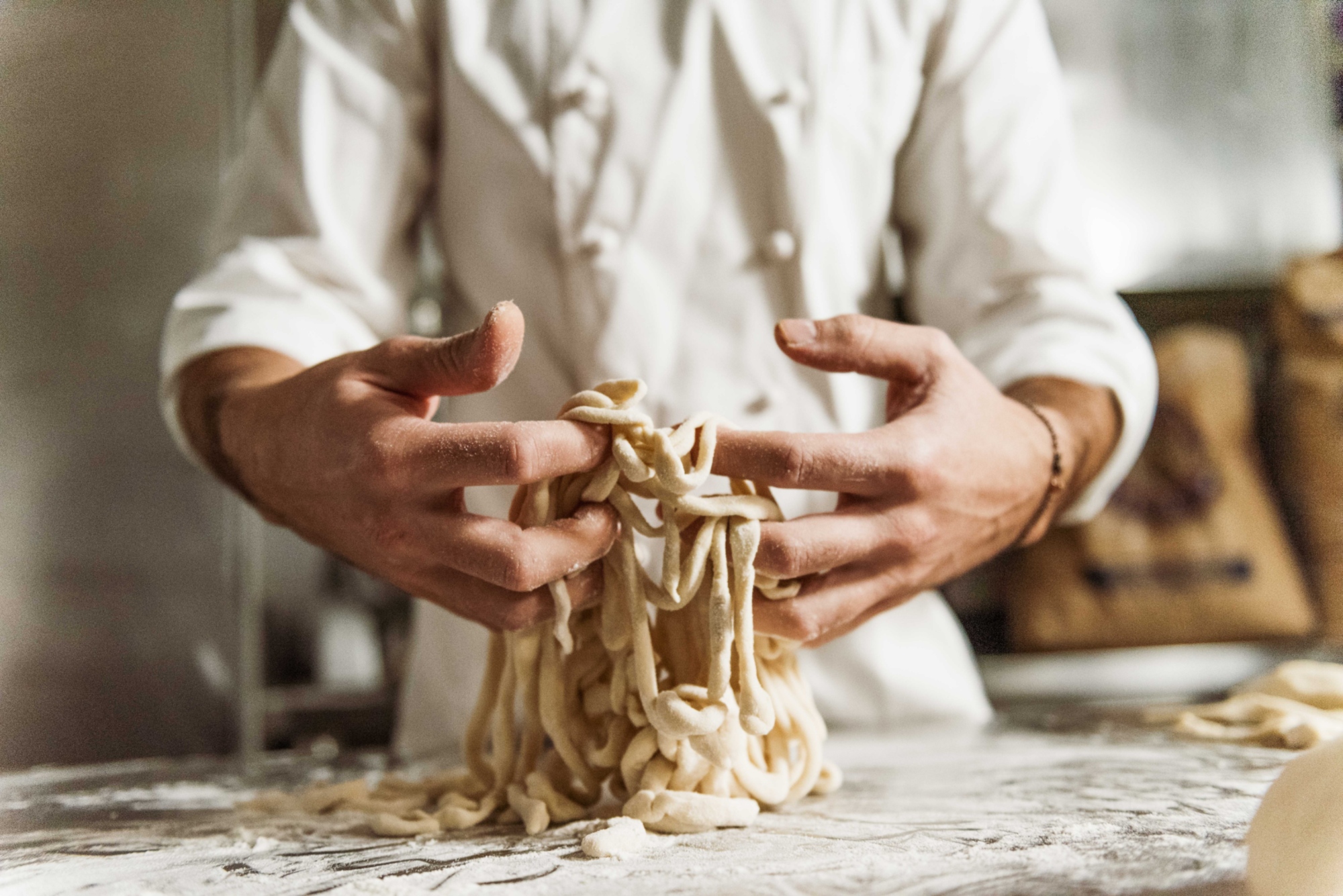
To end on a high note, two authentic delicacies not to be missed are pici pasta and pecorino cheese, also produced in nearby Pienza. There is no better way to end a day of exploration than to sit down at a table in one of the many taverns in the town center and enjoy the typical cuisine, accompanied, of course, by a glass of excellent Vino Nobile wine.
What’s nearby?



